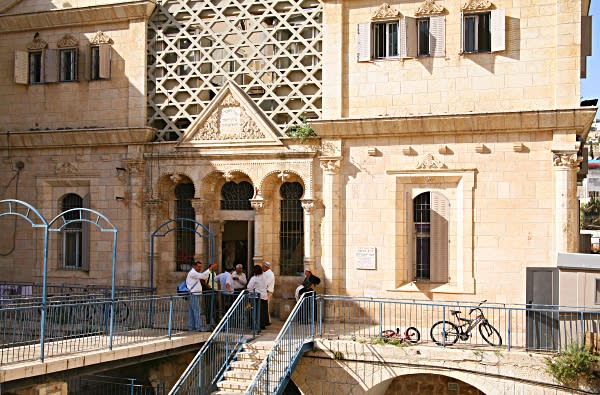The daughters of Tzelafchad, those righteous and smart women, petition Moshe for a piece of land in Eretz Yisrael (Bamidbar 27, their father died and why should their family lose out). Their claim is vindicated by the Almighty and through their righteousness a parsha in the Torah comes to light – one of only four places in the Torah where Moshe seeks Divine counsel to gain ultimate clarity regarding Halacha.
Rashi wonders about the placement of this episode and posits a poignant notion – for it immediately follows the new census conducted by Yehoshua and Elazar (the new leaders of Klal Yisrael) – a census wherein the Torah sadly reminds us of the post meraglim (spies) reality: [Bamidbar, 26:64-65]
And of these, there was no man counted by Moshe and Aharon .. for Hashem had said of them they will surely die in the wilderness save for Kalev and Yehoshua
No man was counted – however the women did enter the land – for they were not part of the sin of the Spies. Their love for the land is the essential contrast here: the women who sought a piece of the land and the men who rejected it; that is the intent of the positioning of the text.
It is remarkable to note that the basic midrashc view is that the women took no part in either of the two major desert sins, the Golden Calf and the Spies. [For a partial explanation of this phenomenon, see a beautiful Kli Yakar that connects this reality to the selfless nature of women and the selfless nature of the land of Israel]
Last year, my wife spent a few days in the presence of Sarah Nachshon. She has bli ayin hara ten children and 70 grandchildren. My wife was blown away by her incredible stories.
Who is she? Google her. She is from the righteous women whose mesirat nefesh has allowed us to hold on to Chevron. In 1980, she with 14 other women and 30 children covertly entered the abandoned Jewish hospital Beit Hadassah in Hebron. The army and government had assumed that if they prevented the husbands from entering Beit Hadassah, the women would not be able to make it on their own. But weeks turned into months and not only were the women not leaving – but they succeeded in establishing a school within the building, and other programs to keep the children occupied and happy. They lived without electricity, running water, and in substandard conditions, forbidden to leave the building lest the army prevent them from reentering.
These women were not allowed to meet with their husbands or leave the building. But on Friday nights, when the men were returning home from prayers at the Machpelah Cave, they would stand outside of Beit Hadassah and serenade these heroic women with the traditional Friday-night song Eishet Chayil, A Woman of Valor.
Now there are over 800 residents in Chevron – with a waiting list.
As I walked the hot summer streets of Ramat Beit Shemesh and considered that the average age of this population is about 8-10 years old (do the math and you will see how true this is) and saw the mothers with beautiful big families carrying themselves with dignity, simcha, and modesty, it became clear to me that the mesirat nefesh and sense of priorities that the righteous women of Israel have bequeathed to our nation continues – bayamim haheim bazeman hazeh – in those days and now.
Good Shabbos to All, Asher Brander
Rabbi Asher Brander is the Rabbi of the Westwood Kehilla, Founder/Dean of LINK (Los Angeles Intercommunity Kollel) and is a Rebbe at Yeshiva University High Schools of Los Angeles
The words of this author reflect his/her own opinions and do not necessarily represent the official position of the Orthodox Union.
